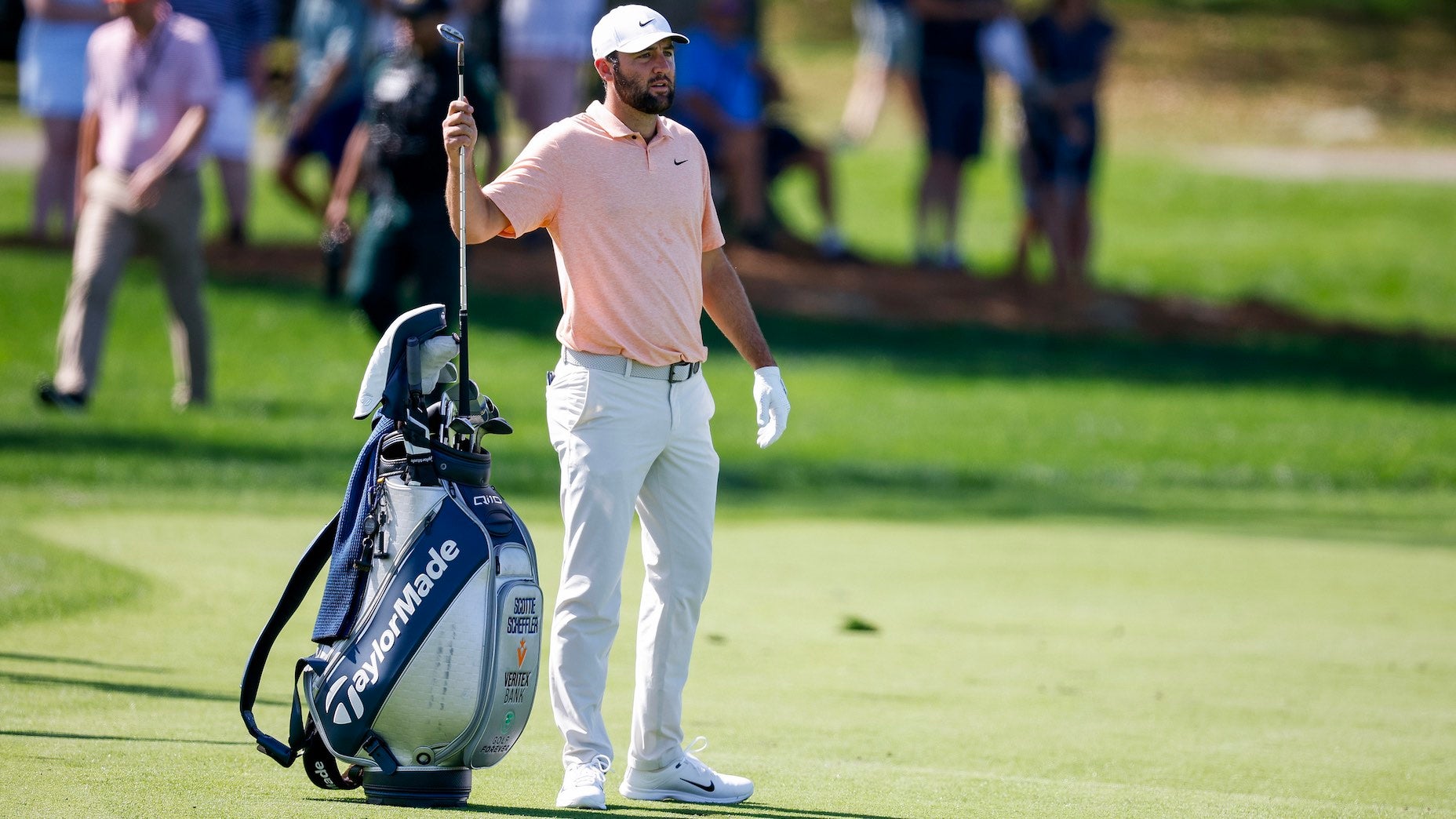Analyzing 1 popular tour gear trend — and when you should use it
- Share on Facebook
- Share on Twitter
- Share by Email

Should weekend golfers worry about what the best players are using each week? It depends.
Getty Images
Let’s start things off with a disclaimer: You should never construct a bag setup around popular equipment on Tour. Just because something is red-hot and being used by a myriad of high-profile names doesn’t make it a good fit for your swing or goals.
With the disclaimer out of the way, you’re probably wondering why we’re discussing tour equipment trends. It’s partly because we’re gear sickos and enjoy tracking what the pros are using. The other reason is that you can sometimes learn something about your own game by tracking the trends.
In a recent post on social media, Sporting Insights (@sms_on_tour) posted an interesting chart tracking club usage over the past 15 years on the DP World Tour. More specifically, average club per player usage for wedges, fairway woods, hybrids, utility irons and 3-irons.

Some of the usage numbers seem obvious: Almost no one is using a traditional 3-iron these days (unless you’re Austin Eckroat). And fairway wood usage has remained consistent.
If there’s one club that’s seen a noticeable increase on the DP World Tour — and pro golf as a whole, to be fair — it’s the wedge. With many pros going from a three-wedge setup to four scoring tools, it’s natural to wonder if this is a tour trend weekend golfers should be adopting if they haven’t already.
For most golfers carrying four wedges in the bag, the setup generally consists of a pitching wedge, gap wedge, sand wedge and lob wedge.
With length not being as big of an issue for the longer players on tour, having an extra scoring club in the bag for shots inside 130 yards becomes far more important to hit specific numbers. The last thing you want is a tweener yardage that constantly puts you in between clubs . Some pros, Tiger Woods included, prefer to get creative and embrace tweener yardages, but most pros would rather have a number close to their stock yardage with a gap or sand wedge.
If you’re contemplating following recent tour trends and adding a fourth wedge, it’s important to ask yourself two questions: Where is your golf typically played? And what’s the state of your short game? For starters, if you’re playing a course that’s on the longer side, it might makes sense to add a longer club to the bag and remove a wedge.

PING s159 Custom Wedge
$179.99
View Product
“It really depends on where you play,” Rory McIlroy told GOLF.com. “If your home course is on the longer side, maybe consider going with just three wedges, because you’d probably benefit from a hybrid or another fairway wood. The opposite would probably be the case for shorter courses where you’ll have more wedges in your hand.”
Taking an honest assessment of your short game isn’t easy, because it means asking the hard questions — like whether you need that 60-degree lob wedge. If you’re dead set on the lobber and have the game to get it up-and-down consistently, proceed with what you’re using. But in most cases, you’d be better off adding another fairway wood or hybrid and leaning on the sand wedge.
“Our golfing community here in the States, we are lob wedge lovers,” said master clubmaker Mike Taylor. “That’s all good, but it’s not necessarily always the club that we need to execute certain shots. And that sand [wedge] is not just to be used from that yardage where you’re comfortable with it; it’s that balance of the game, and we try to enable people to understand that here in our fitting processes. I don’t want to see people put their sand wedges in a category where it just fills another gapping. It’s a useful tool in a lot of places.”
Latest In Gear
The 6 most important launch monitor numbers to track

Jonathan Wall
Golf.com Editor
Jonathan Wall is GOLF Magazine and GOLF.com’s Managing Editor for Equipment. Prior to joining the staff at the end of 2018, he spent 6 years covering equipment for the PGA Tour. He can be reached at jonathan.wall@golf.com.








